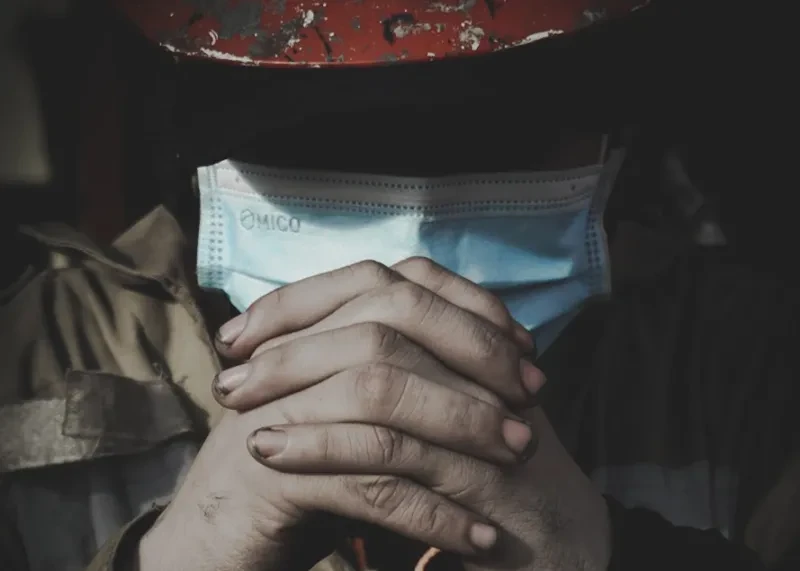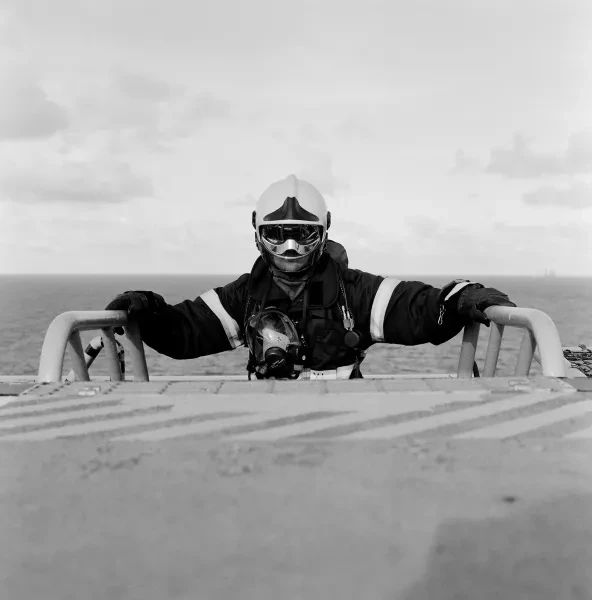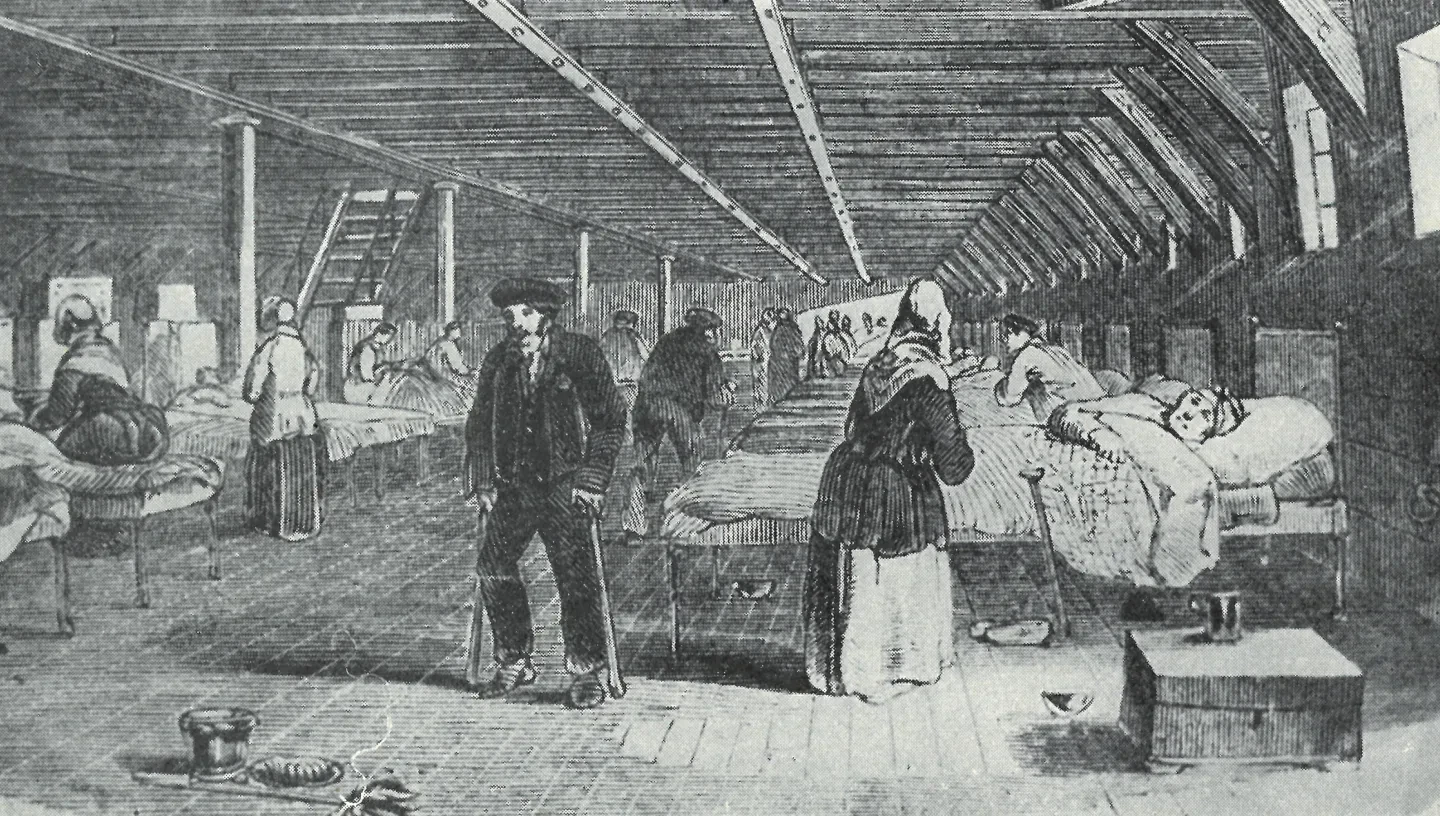
Seafaring has always been a physically and mentally demanding role. To mark Day of the Seafarer we have invited the Seafarers Hospital Society to share about their role in promoting seafarer welfare during the last 200 years.
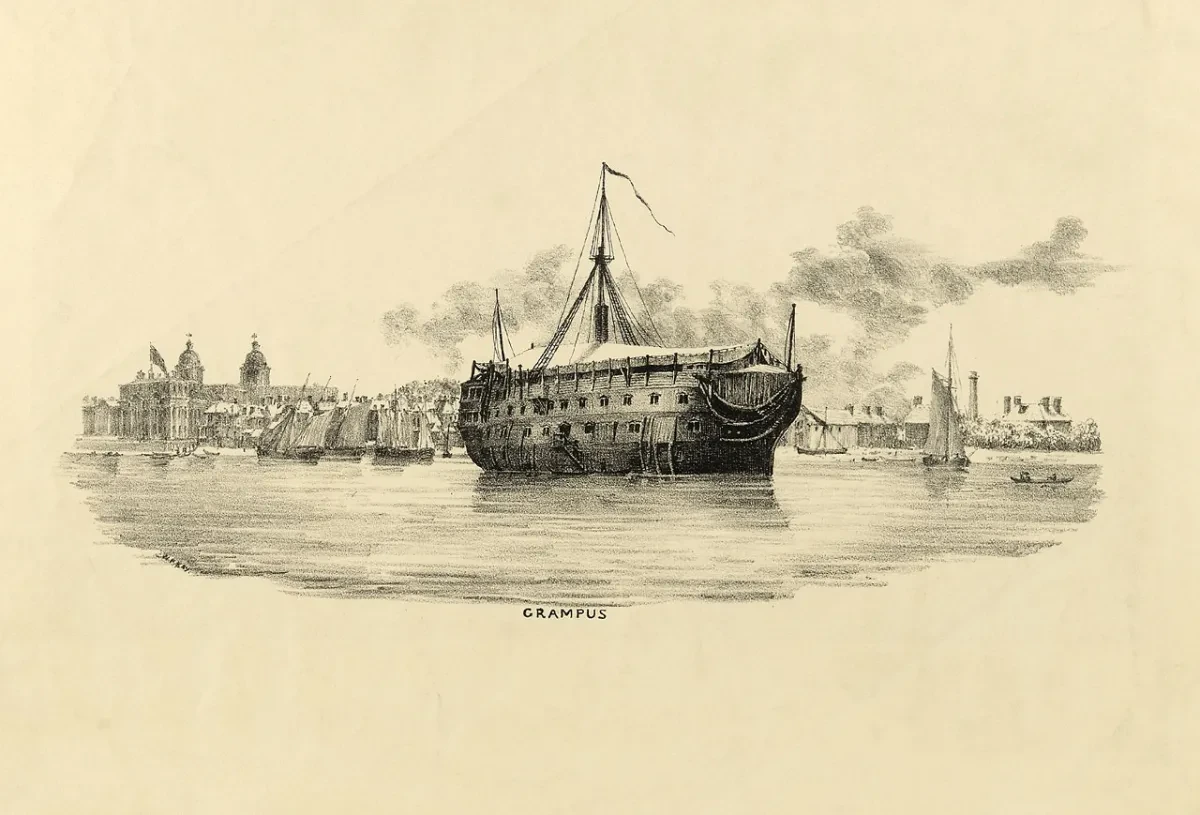
The idea of a floating hospital ship was born out of the Society’s wish to treat all seamen in an environment that would be most conducive to recovery from illness and disease.
At the time it was felt that seamen would respond much more successfully to medical treatment if it was carried out on a ship rather than in a land-based hospital. As a result, the HMS Grampus was loaned to the Society by the Admiralty in 1821 and moored on the river at Greenwich.
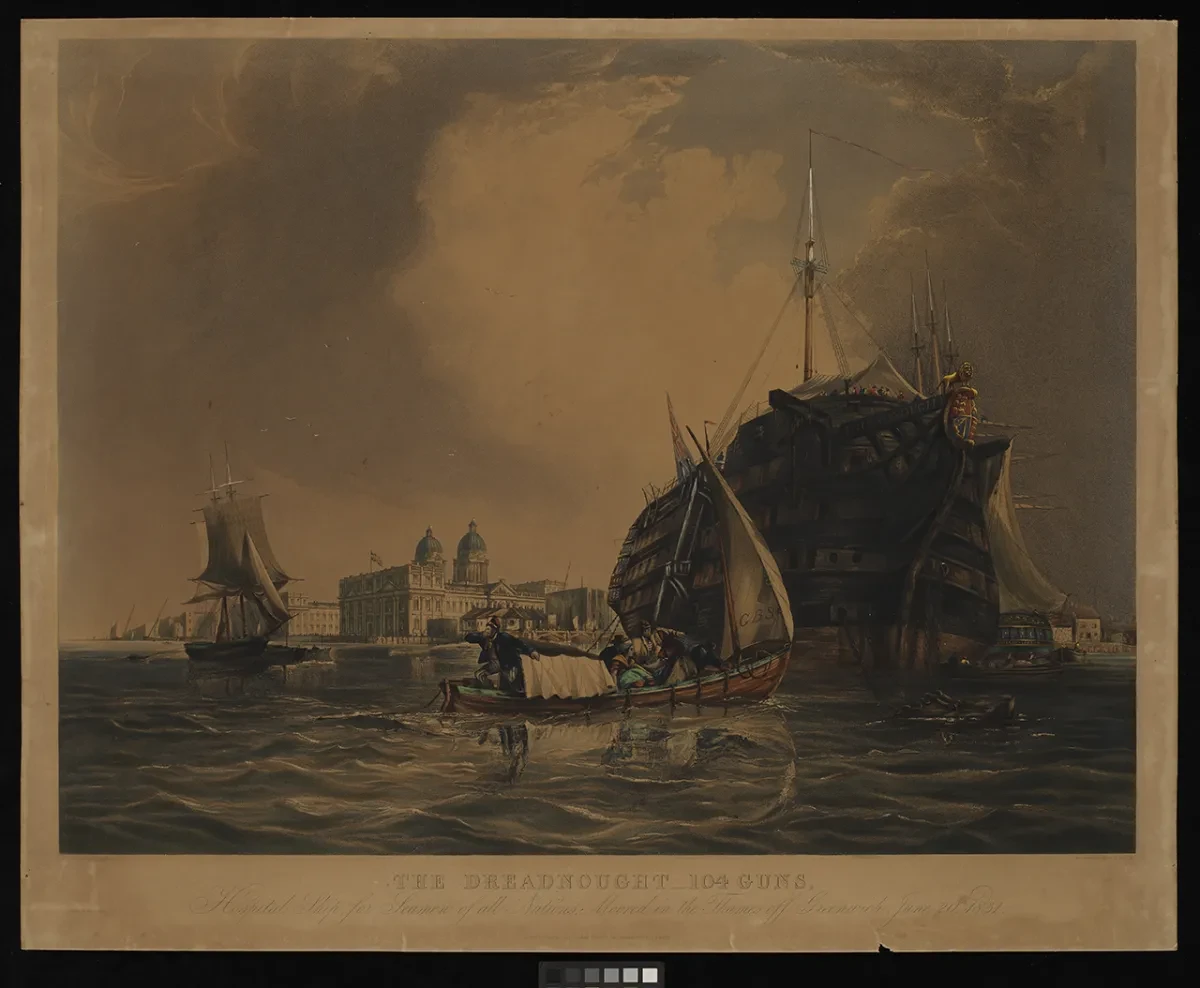
The Society’s hospital ship remained a distinctive sight on the Thames for 50 years and when the Grampus was replaced by HMS Dreadnought in 1831 the name became synonymous with the Seamen’s Hospital.
Not only was the name ‘Dreadnought’ retained in 1870 when the hospital moved on shore into the old infirmary of Greenwich Hospital, it also remains the name of the current priority treatment service for seafarers at Guy’s and St Thomas’ Hospitals.
Founding
The 19th century philanthropists who founded the Seamen’s (now Seafarers) Hospital Society were motivated above all by the desire to improve the lives of seafarers. The Society was set up in 1821 to solve the ‘problem’ of thousands of unemployed and sick seamen begging on the streets of London after the Napoleonic Wars.
Pioneering treatments
Throughout the 19th century the Society’s medical staff were pioneers in their approach to the treatment of seafarers.
Not only did they use the latest techniques in curative medicine, they also treated seafarers in hospital wards which had good sanitation, were well ventilated and followed strict quarantine procedures.
There were several outbreaks of epidemic cholera in the 19th century and the Society’s doctors ran schemes involving the inspection of hundreds of merchant ships moored on the Thames in order to control the spread of this disease. They also carried out extensive research into scurvy which resulted in this common seafaring condition being virtually eradicated from the merchant marine.
Another significant contribution to improving the wellbeing of seafarers was made by the Society’s Dr. Harry Leach who wrote the ‘Ship Captain’s Medical Guide’. This book classified medical and surgical diseases in merchant seafarers for the first time and was not only required to be carried on every merchant ship but is still published today.
London School of Tropical medicine
As the 19th century gave way to the 20th the Society’s objectives broadened to encompass a new approach to the treatment of tropical diseases.
In 1899 the Society opened the London School of Tropical Medicine at its Albert Dock Hospital.
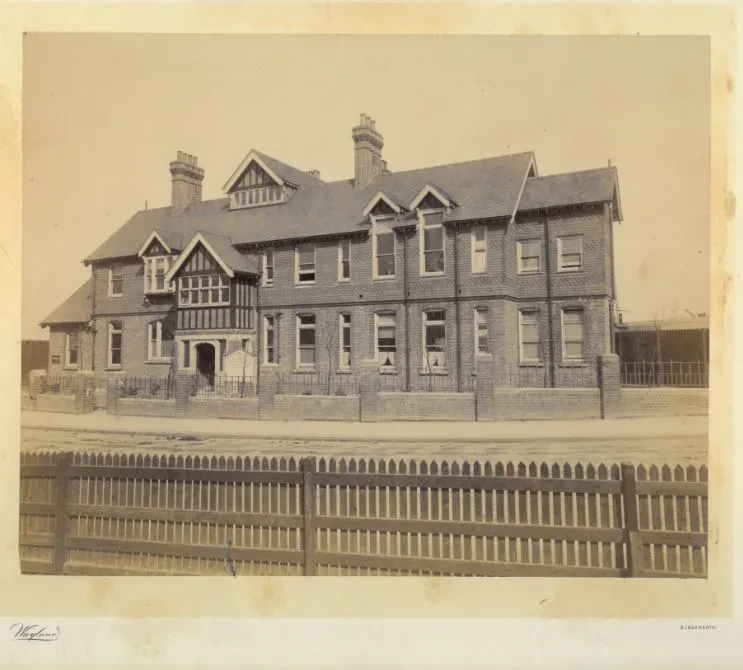
The School was set up to address the problem that, due to increasing colonial trade, growing numbers of seafarers were suffering from tropical diseases. The School carried out important research which was used to treat patients in the adjoining Hospital for Tropical Diseases.
The Society continued to run the London School of Tropical Medicine and the Hospital for Tropical Diseases when they moved to central London in 1920 and, although the London School of Tropical Medicine was eventually amalgamated into the London School of Hygiene and Tropical Medicine in 1929, the Society continued to run the Hospital for Tropical Diseases until the creation of the NHS in 1948.
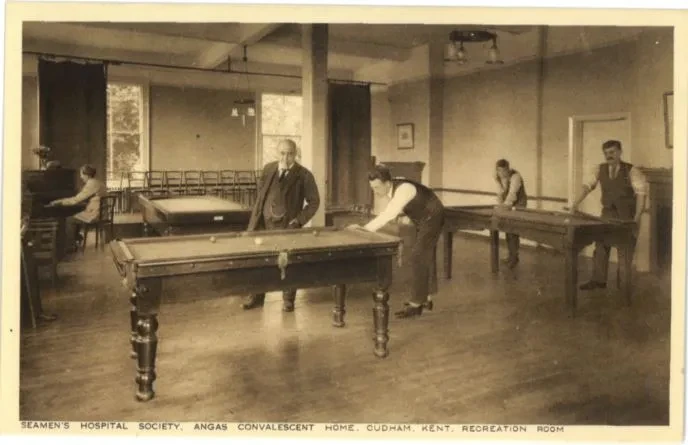
During the 20th century the Society also widened its remit to include the innovative idea of rehabilitating seafarers who were suffering from illness and injuries.
Its doctors also began addressing the mental health issues which often resulted from seafarers being forced to spend long periods recovering from illness. The Society’s Angas Convalescent Home, which was opened in 1918, provided billiard tables, croquet and other physical and mental activities to help rehabilitate patients and get them back to sea.
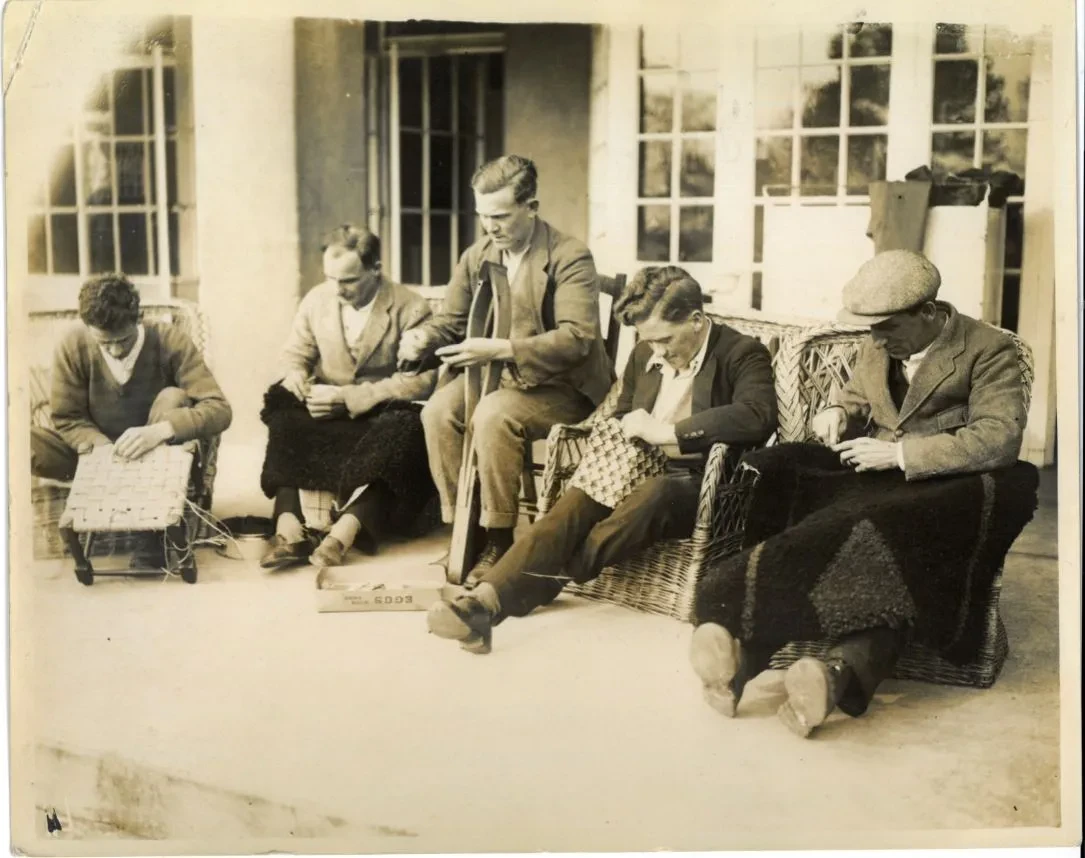
The King George’s Sanatorium for Sick Sailors, which was opened by the Society in 1920, took the commitment to rehabilitation even further.
The Sanatorium developed a successful Occupational Therapy programme which helped patients overcome the boredom and depression which resulted from long term treatment for tuberculosis.
Seafarers at the sanatorium could learn sewing, knitting and embroidery and also how to make brooms, stools and rugs that were sold locally. They could also learn bee keeping and work on the poultry farm and there were posts in the grounds at different intervals to show patients how far they should go when exercising.
Rehabilitation
Perhaps one of the Society’s greatest contributions to improving the wellbeing of seafarers in the 20th century was the Nuffield Rehabilitation Centre and Fracture Clinic at the new Albert Dock Hospital, which was opened in 1938.
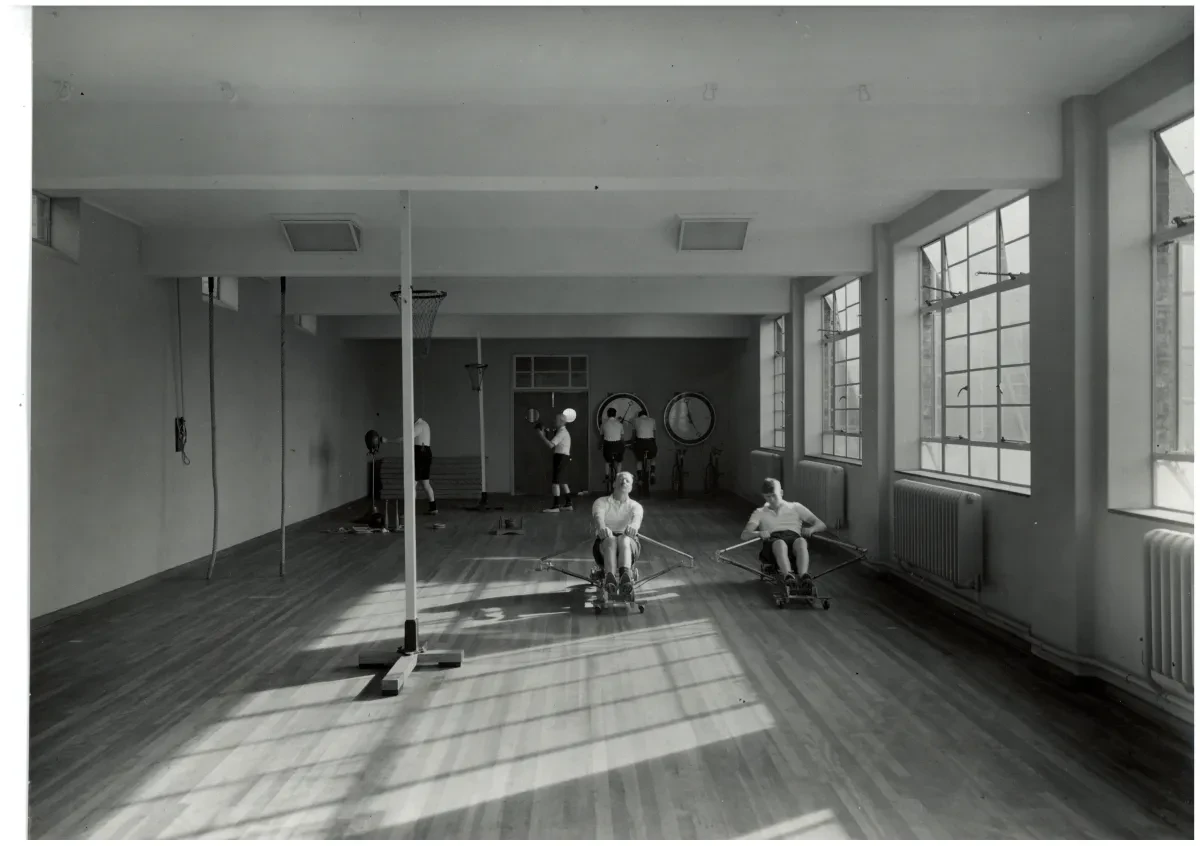
The hospital had always treated injured dockworkers as well as seafarers but Dr (later Sir) H. E. Griffiths, who ran the new unit, believed passionately that injured men must be kept working rather than be confined to bed rest. The unit offered ground-breaking physiotherapy and a key feature of the treatment programme was daily use of the gymnasium where, through competitive games and exercises, injured men got fit to return to work.
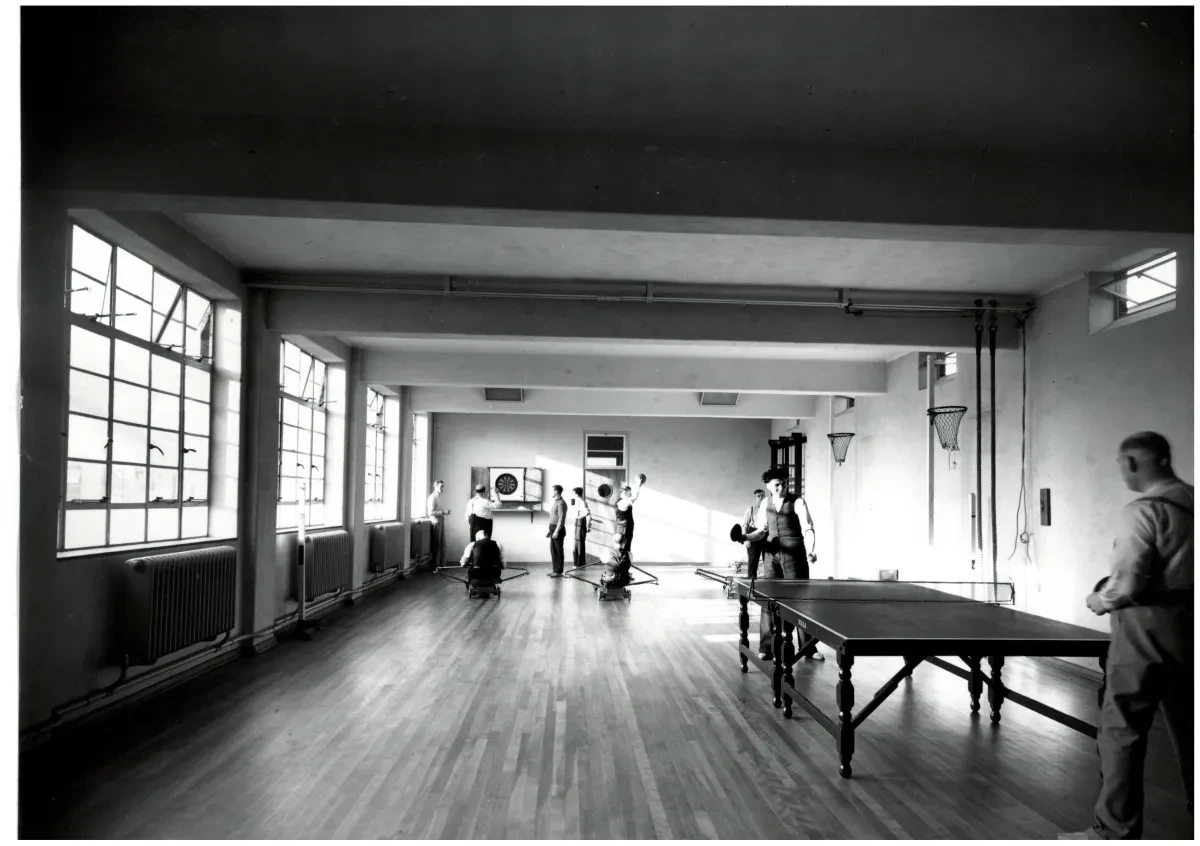
Dr Griffiths estimated that men who recovered after taking part in the programme would have taken four years to reach the same level of fitness if they’d been confined to bed rest, which was the conventional approach at the time.
The Albert Dock Hospital’s Rehabilitation Centre and Fracture Clinic operated successfully for 40 years and today the Society is committed to continuing this tradition of rehabilitation and mental health awareness.
In 2007 the Society began funding free, fast track physiotherapy for seafarers in Newlyn and today, in conjunction with the SeaFit programme and Connect, this provision has expanded into a network of physiotherapists treating seafarers across the UK.
In 2016 the Society began funding the online mental health support service Big White Wall (now Togetherall) and today the Society is collaborating with Yale University on a landmark study to determine the effectiveness of initiatives taken in the maritime sector to keep seafarers physically and mentally healthy and safe.
The Seafarers Hospital Society is celebrating its 200th anniversary this year. There have been huge changes over this time, but its core values remain the same.
The Society is and has always been responsive to the problems faced by seafarers; pioneering in its approach to treatment, medical practice and training; and inclusive and non-discriminatory in its treatment of seafarers and the provision of opportunities.
Want to find out more?
The Seafarers Hospital Society's original Admission Registers are held in the National Maritime Museum's Caird Library, where they can be accessed either digitally or in person by booking in advance.
Written by Caroline Randall, Seafarers Hospital Society.
